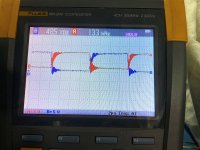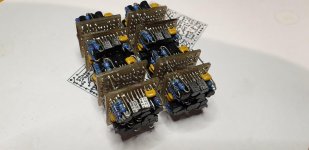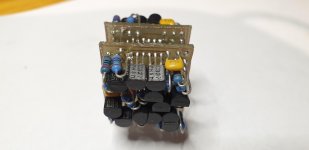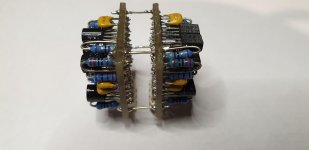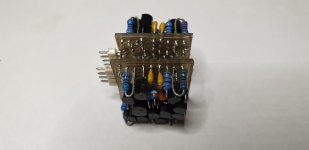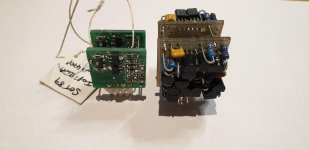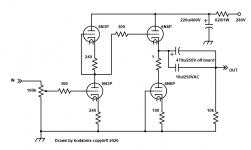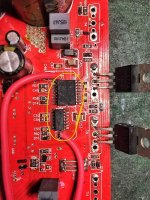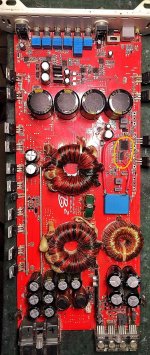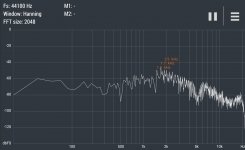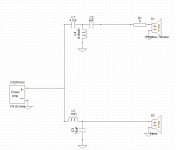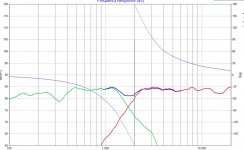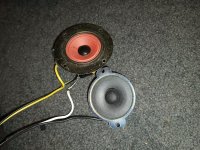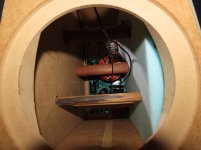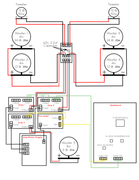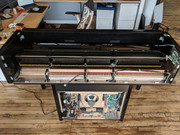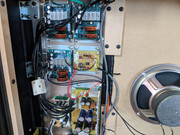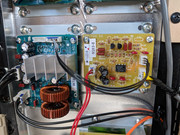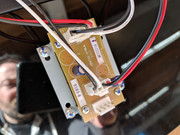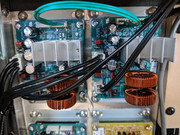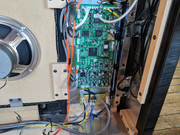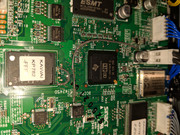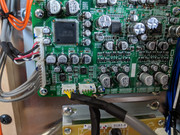Active Crossover Network (XO) Topology (MFB vs. Sallen Key) or OP-Amp Type - what is more important in order of Sonic Performance ? ?
- Multi-Way
- 4 Replies
Under
https://glass-ware.stores.yahoo.net/nostmfbcr.html
I read follow:
The multiple-feedback filter is based on the inverting amplifier topology, whereas the Sallen-Key is based on the non-inverting topology. This makes a big difference, as the assumption behind the Sallen-Key topology is that the buffer's output actually realizes absolute unity-gain; no buffers do. In contrast, the multiple-feedback filter relies on there being phase inversion of the input signal, which there always is. In addition, the MFB's initial RC filter are outside the feedback loop, so this pre-filter is essentially passive, therefore incapable of overload.
Usual both commercial and diy active crossover network units are in general wired according the best known Sallen-Key topology - here is present the great benefit of variable XO frequency with help of simple pots.
Maybe this is an important reason of the very low popularity of active XO in MFB topology.
Mostly the ask of the best op amp I note often - e. g.
https://www.diyaudio.com/community/threads/which-opamp-for-active-crossover.187095/
https://www.diyaudio.com/community/threads/op-amps-for-active-crossover.88513/
https://www.diyaudio.com/community/threads/op-amps-for-active-xover-and-line-drivers.249499/
https://www.diyaudio.com/community/...r-active-crossover-design-for-speaker.383631/
https://www.diyaudio.com/community/threads/active-crossover-parts-selection.378555/
But nobody ask about differences concerning the topology. Therefore the question:
Who have heard both versions especially in the high frequency rail e. g. with JBL or BMS drivers or any AMT driver ? - like those under
https://www.diyaudio.com/community/threads/amt-ess-1-vs-stage-accompany-sa8535-sa-8535.164153/
https://www.diyaudio.com/community/...401-sa8535-ess-amt-or-beymas-tpl-150h.267960/
Thanks for comments and URL's.
https://glass-ware.stores.yahoo.net/nostmfbcr.html
I read follow:
The multiple-feedback filter is based on the inverting amplifier topology, whereas the Sallen-Key is based on the non-inverting topology. This makes a big difference, as the assumption behind the Sallen-Key topology is that the buffer's output actually realizes absolute unity-gain; no buffers do. In contrast, the multiple-feedback filter relies on there being phase inversion of the input signal, which there always is. In addition, the MFB's initial RC filter are outside the feedback loop, so this pre-filter is essentially passive, therefore incapable of overload.
Usual both commercial and diy active crossover network units are in general wired according the best known Sallen-Key topology - here is present the great benefit of variable XO frequency with help of simple pots.
Maybe this is an important reason of the very low popularity of active XO in MFB topology.
Mostly the ask of the best op amp I note often - e. g.
https://www.diyaudio.com/community/threads/which-opamp-for-active-crossover.187095/
https://www.diyaudio.com/community/threads/op-amps-for-active-crossover.88513/
https://www.diyaudio.com/community/threads/op-amps-for-active-xover-and-line-drivers.249499/
https://www.diyaudio.com/community/...r-active-crossover-design-for-speaker.383631/
https://www.diyaudio.com/community/threads/active-crossover-parts-selection.378555/
But nobody ask about differences concerning the topology. Therefore the question:
Who have heard both versions especially in the high frequency rail e. g. with JBL or BMS drivers or any AMT driver ? - like those under
https://www.diyaudio.com/community/threads/amt-ess-1-vs-stage-accompany-sa8535-sa-8535.164153/
https://www.diyaudio.com/community/...401-sa8535-ess-amt-or-beymas-tpl-150h.267960/
Thanks for comments and URL's.


